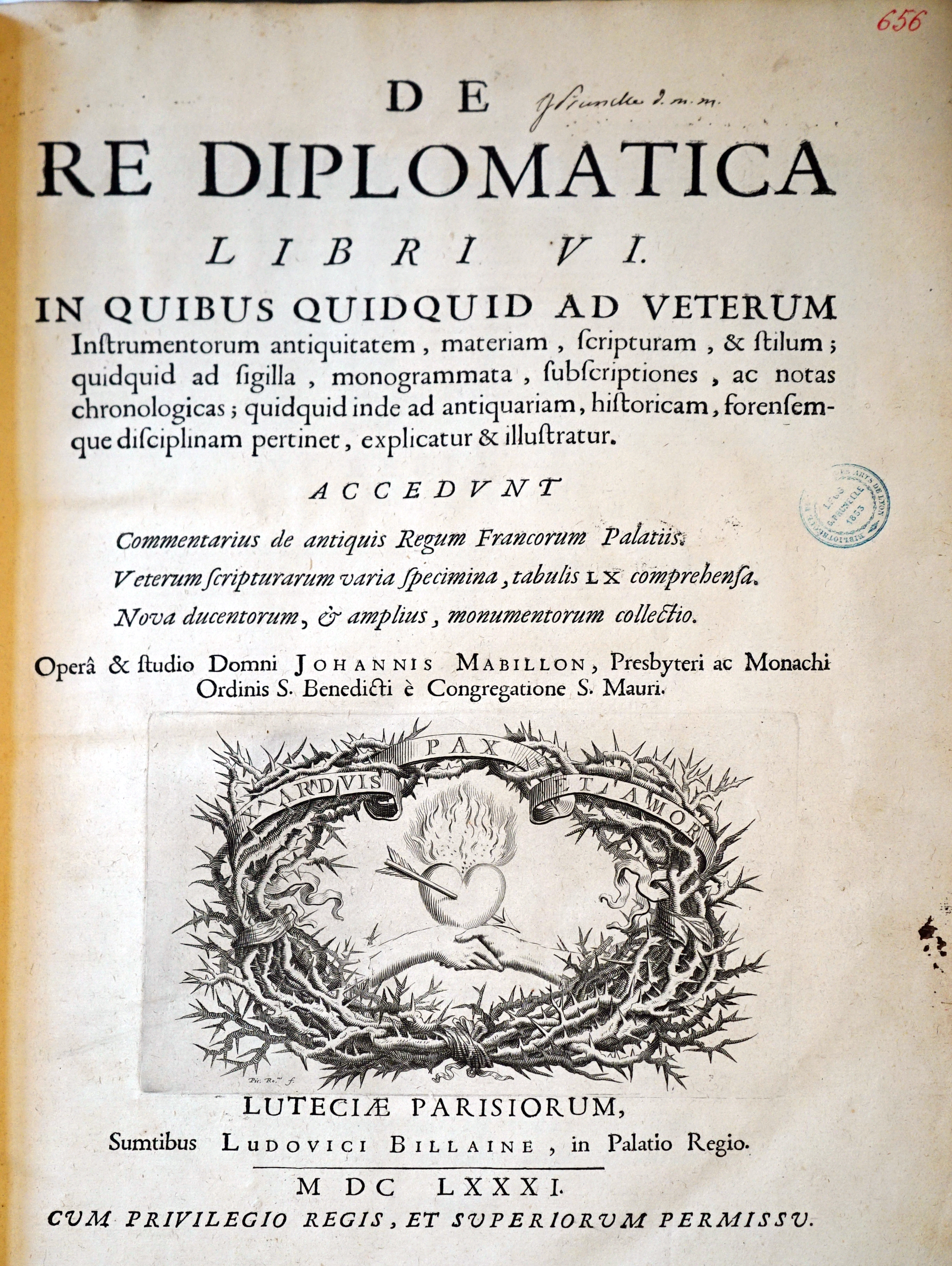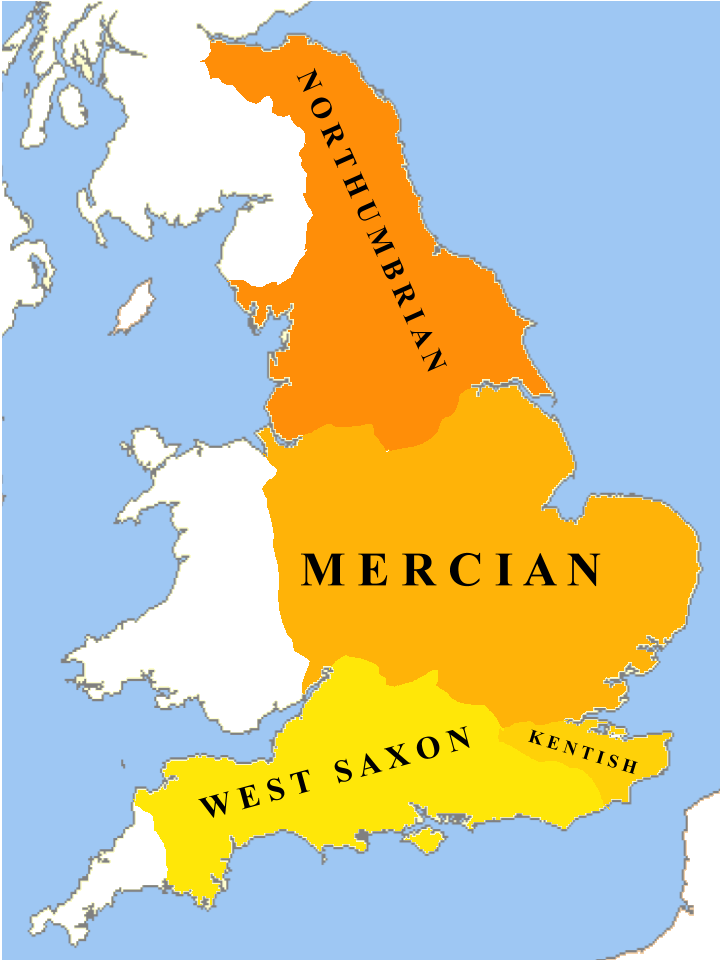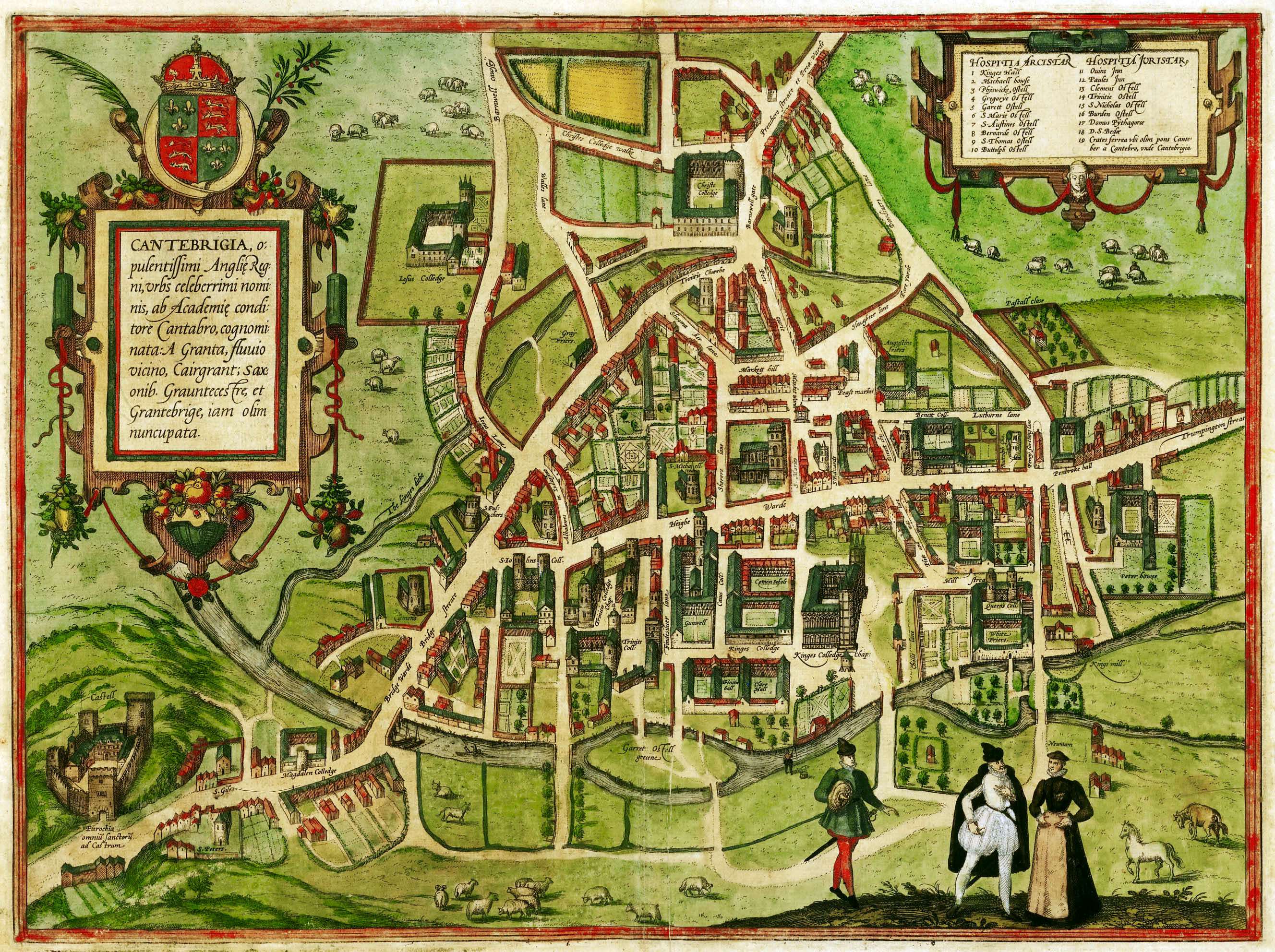|
Byrhtferth
Byrhtferth (; ) was a priest and monk who lived at Ramsey Abbey in Huntingdonshire (now part of Cambridgeshire) in England. He had a deep impact on the intellectual life of later Anglo-Saxon England and wrote many computistic, hagiographic, and historical works.''The Blackwell Encyclopedia of Anglo-Saxon England'', ed. Michael Lapidge (1991)''Medieval England: an encyclopedia''; editors: Paul E. Szarmach, M. Teresa Tavormina, Joel T. Rosenthal. New York: Garland Publishing (1998) He was a leading man of science and best known as the author of many different works (although he may not have written many of them)."The Old English Canon of Byrhtferth of Ramsey", Peter S. Baker. ''Speculum'', Vol. 55, No. 1. (1980) His ''Manual'' (''Enchiridion''), a scientific textbook, is Byrhtferth's best known work. He studied with Abbo of Fleury, who was invited to Ramsey Abbey by Oswald of Worcester to help teach. Abbo was there during the period 985 to 987, and became a large influence on By ... [...More Info...] [...Related Items...] OR: [Wikipedia] [Google] [Baidu] [Amazon] |
Egwin
Egwin of Evesham (died 30 December 717) was a Benedictine monk and, later, the third Bishop of Worcester in England. He is venerated as a saint in the Catholic Church. Life Egwin was born in Worcester of a noble family, and was a descendant of Mercian kings. He may possibly have been a nephew of King Æthelred of Mercia. Having become a monk, his biographers say that king, clergy, and commoners all united in demanding Egwin's elevation to bishop; but the popularity which led him to the episcopal office dissipated in response to his performance as bishop. He was consecrated bishop after 693.Fryde, et al. ''Handbook of British Chronology'' p. 223 As a bishop he was known as a protector of orphans and widows and a fair judge. He struggled with the local population over the acceptance of Christian morality, especially Christian marriage and clerical celibacy. Egwin's stern discipline created a resentment which, as King Æthelred was his friend, eventually found its way to his eccles ... [...More Info...] [...Related Items...] OR: [Wikipedia] [Google] [Baidu] [Amazon] |
Oswald Of Worcester
Oswald of Worcester (died 29 February 992) was Archbishop of York from 972 to his death in 992. He was of Danish ancestry, but brought up by his uncle, Oda of Canterbury, who sent him to France to the abbey of Fleury to become a monk. After a number of years at Fleury, Oswald returned to England at the request of his uncle, who died before Oswald returned. With his uncle's death, Oswald needed a patron and turned to another kinsman, Oskytel, who had recently become Archbishop of York. His activity for Oskytel attracted the notice of Archbishop Dunstan who had Oswald consecrated as Bishop of Worcester in 961. In 972, Oswald was promoted to the see of York, although he continued to hold Worcester also. As bishop and archbishop, Oswald was a supporter and one of the leading promoters (together with Æthelwold) of Dunstan's reforms of the church, including monastic reforms.Lawrence ''Medieval Monasticism'' p. 101 Oswald founded a number of monasteries, including Ramsey Abbey, an ... [...More Info...] [...Related Items...] OR: [Wikipedia] [Google] [Baidu] [Amazon] |
Ramsey Abbey
Ramsey Abbey was a Order of Saint Benedict, Benedictine abbey in Ramsey, Cambridgeshire, Ramsey, Huntingdonshire (now part of Cambridgeshire), England. It was founded about AD 969 and Dissolution of the Monasteries, dissolved in 1539. The site of the abbey in Ramsey is now a scheduled monument. Most of the abbey's buildings were demolished after the dissolution but surviving structures are Listed building#Categories of listed building, Grade I and Grade II* listed buildings. Ramsey Abbey Gatehouse is in the care of the National Trust for Places of Historic Interest or Natural Beauty, National Trust and the Church of St Thomas à Becket, Ramsey was one of the buildings of the abbey. The Abbey Ramsey Abbey was founded in 969 by Oswald of Worcester, Oswald, Bishop of Worcester on land donated by Æthelwine, Ealdorman of East Anglia (Earl Ailwyn), where he had already built a wooden chapel for three monks. The foundation was part of the mid-10th-century English Benedictine reform, i ... [...More Info...] [...Related Items...] OR: [Wikipedia] [Google] [Baidu] [Amazon] |
Computus
As a moveable feast, the date of Easter is determined in each year through a calculation known as – often simply ''Computus'' – or as paschalion particularly in the Eastern Orthodox Church. Easter is celebrated on the first Sunday after the Paschal full moon (a mathematical approximation of the first astronomical full moon, on or after 21 March itself a fixed approximation of the March equinox). Determining this date in advance requires a correlation between the lunar months and the solar year, while also accounting for the month, date, and weekday of the Julian or Gregorian calendar. The complexity of the algorithm arises because of the desire to associate the date of Easter with the date of the Jewish feast of Passover which, Christians believe, is when Jesus was crucified. It was originally feasible for the entire Christian Church to receive the date of Easter each year through an annual announcement by the pope. By the early third century, however, communic ... [...More Info...] [...Related Items...] OR: [Wikipedia] [Google] [Baidu] [Amazon] |
Menologium
A menologium (, pl. menologia), also known by other names, is any collection of information arranged according to the days of a month, usually a set of such collections for all the months of the year. In particular, it is used for ancient Roman farmers' almanacs (); for the untitled Old English poem on the Julian calendar that appears in a manuscript of the Anglo-Saxon Chronicle; for the liturgical books (also known as the menaia) used by the Eastern Orthodox Church and Eastern Catholic Churches following the Byzantine Rite that list the propers for fixed dates, typically in twelve volumes covering a month each and largely concerned with saints; for hagiographies (also known as synaxaria) and liturgical calendars written as part of this tradition; and for equivalents of these works among Roman Catholic religious orders for organized but private commemoration of their notable members. Name '' Menologium'' is the Latin form of Greek menologion (, ''menológion''), which is ... [...More Info...] [...Related Items...] OR: [Wikipedia] [Google] [Baidu] [Amazon] |
Simeon Of Durham
__NOTOC__ Symeon (or Simeon) of Durham (fl. c.1090 to c. 1128 ) was an English chronicler and a monk of Durham Priory. Biography Symeon was a Benedictine monk at Durham Cathedral at the end of the eleventh century. He may have been one of 23 monks moved to Durham from the monastery at Jarrow by Bishop William of St Calais in 1083, but the historian Bernard Meehan thinks that it is more likely that Symeon entered Durham in the 1090s. He eventually became precentor of the priory, and examples of his handwriting appear to survive in several Durham books, including the ''Liber Vitae'', the so-called Cantor's Book (whose text he would have had to keep up to date as part of his duties as precentor), and in copies of his own historical works. Works Symeon was author of two historical works which are particularly valuable for northern affairs, the '' Libellus de Exordio atque Procursu istius, hoc est Dunelmensis, Ecclesie'' (''The Little Book on the Origins and Progress of this Church, ... [...More Info...] [...Related Items...] OR: [Wikipedia] [Google] [Baidu] [Amazon] |
Bede
Bede (; ; 672/326 May 735), also known as Saint Bede, Bede of Jarrow, the Venerable Bede, and Bede the Venerable (), was an English monk, author and scholar. He was one of the most known writers during the Early Middle Ages, and his most famous work, '' Ecclesiastical History of the English People'', gained him the title "The Father of English History". He served at the monastery of St Peter and its companion monastery of St Paul in the Kingdom of Northumbria of the Angles. Born on lands belonging to the twin monastery of Monkwearmouth–Jarrow in present-day Tyne and Wear, England, Bede was sent to Monkwearmouth at the age of seven and later joined Abbot Ceolfrith at Jarrow. Both of them survived a plague that struck in 686 and killed the majority of the population there. While Bede spent most of his life in the monastery, he travelled to several abbeys and monasteries across the British Isles, even visiting the archbishop of York and King Ceolwulf of Northumbria. ... [...More Info...] [...Related Items...] OR: [Wikipedia] [Google] [Baidu] [Amazon] |
Jean Mabillon
Dom Jean Mabillon , (; 23 November 1632 – 27 December 1707) was a French Benedictine monk and scholar of the Congregation of Saint Maur. He is considered the founder of the disciplines of palaeography and diplomatics. Early life Mabillon was born in the town of Saint-Pierremont, then in the ancient Province of Champagne, now a part of the Department of Ardennes. He was the son of Estienne Mabillon and his wife Jeanne Guérin. At the age of 12 he became a pupil at the Collège des Bons Enfants in Reims. Having entered the seminary in 1650, he left after three years and in 1653 became instead a monk in the Maurist Abbey of Saint-Remi. There his dedication to his studies left him ill, and in 1658 he was sent to Corbie Abbey to regain his strength. He was ordained at Corbie in 1660. In 1663 he was transferred again to Saint-Denis Abbey near Paris, and the following year to the Abbey of Saint-Germain-des-Prés in Paris. This was a move which offered wide opportunities f ... [...More Info...] [...Related Items...] OR: [Wikipedia] [Google] [Baidu] [Amazon] |
Bodleian Library
The Bodleian Library () is the main research library of the University of Oxford. Founded in 1602 by Sir Thomas Bodley, it is one of the oldest libraries in Europe. With over 13 million printed items, it is the second-largest library in Britain after the British Library. Under the Legal Deposit Libraries Act 2003, it is one of six legal deposit libraries for works published in the United Kingdom, and under Irish law it is entitled to request a copy of each book published in the Republic of Ireland. Known to Oxford scholars as "Bodley" or "the Bod", it operates principally as a reference library and, in general, documents may not be removed from the reading rooms. In 2000, a number of libraries within the University of Oxford were brought together for administrative purposes under the aegis of what was initially known as Oxford University Library Services (OULS), and since 2010 as the Bodleian Libraries, of which the Bodleian Library is the largest component. All coll ... [...More Info...] [...Related Items...] OR: [Wikipedia] [Google] [Baidu] [Amazon] |
Medieval Four Elements
In the history of Europe, the Middle Ages or medieval period lasted approximately from the 5th to the late 15th centuries, similarly to the post-classical period of World history (field), global history. It began with the fall of the Western Roman Empire and transitioned into the Renaissance and the Age of Discovery. The Middle Ages is the middle period of the three traditional divisions of Western history: classical antiquity, the medieval period, and the modern period. The medieval period is itself subdivided into the Early Middle Ages, Early, High Middle Ages, High, and Late Middle Ages. Population decline, counterurbanisation, the collapse of centralised authority, invasions, and mass migrations of tribes, which had begun in late antiquity, continued into the Early Middle Ages. The large-scale movements of the Migration Period, including various Germanic peoples, formed new kingdoms in what remained of the Western Roman Empire. In the 7th century, North Africa and the ... [...More Info...] [...Related Items...] OR: [Wikipedia] [Google] [Baidu] [Amazon] |
Old English
Old English ( or , or ), or Anglo-Saxon, is the earliest recorded form of the English language, spoken in England and southern and eastern Scotland in the Early Middle Ages. It developed from the languages brought to Great Britain by Anglo-Saxon settlers in the mid-5th century, and the first Old English literature dates from the mid-7th century. After the Norman Conquest of 1066, English was replaced for several centuries by Anglo-Norman language, Anglo-Norman (a langues d'oïl, type of French) as the language of the upper classes. This is regarded as marking the end of the Old English era, since during the subsequent period the English language was heavily influenced by Anglo-Norman, developing into what is now known as Middle English in England and Early Scots in Scotland. Old English developed from a set of Anglo-Frisian or Ingvaeonic dialects originally spoken by Germanic tribes traditionally known as the Angles (tribe), Angles, Saxons and Jutes. As the Germanic settlers ... [...More Info...] [...Related Items...] OR: [Wikipedia] [Google] [Baidu] [Amazon] |
Cambridge, England
Cambridge ( ) is a city and non-metropolitan district in the county of Cambridgeshire, England. It is the county town of Cambridgeshire and is located on the River Cam, north of London. As of the 2021 United Kingdom census, the population of the City of Cambridge was 145,700; the population of the wider built-up area (which extends outside the city council area) was 181,137. (2021 census) There is archaeological evidence of settlement in the area as early as the Bronze Age, and Cambridge became an important trading centre during the Roman and Viking eras. The first town charters were granted in the 12th century, although modern city status was not officially conferred until 1951. The city is well known as the home of the University of Cambridge, which was founded in 1209 and consistently ranks among the best universities in the world. The buildings of the university include King's College Chapel, Cavendish Laboratory, and the Cambridge University Library, one of the large ... [...More Info...] [...Related Items...] OR: [Wikipedia] [Google] [Baidu] [Amazon] |







